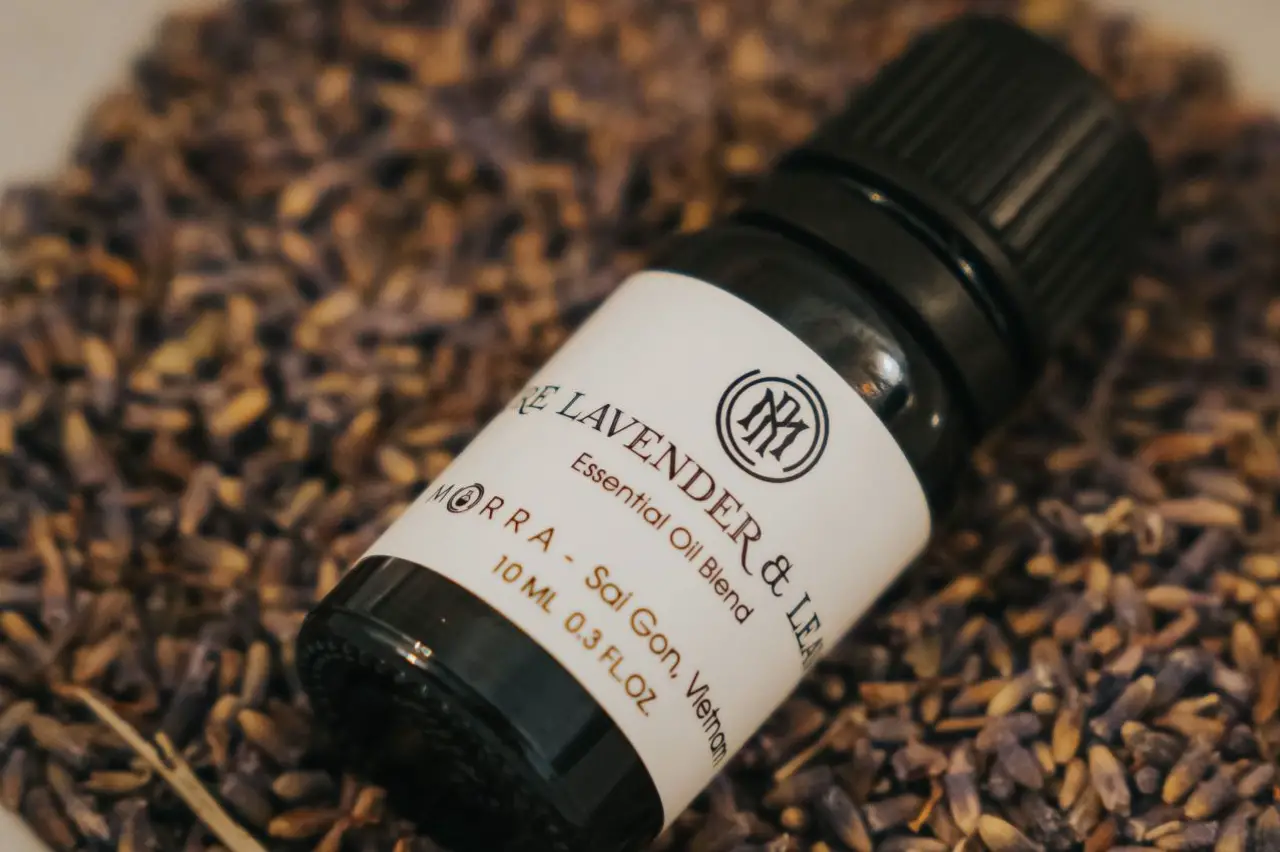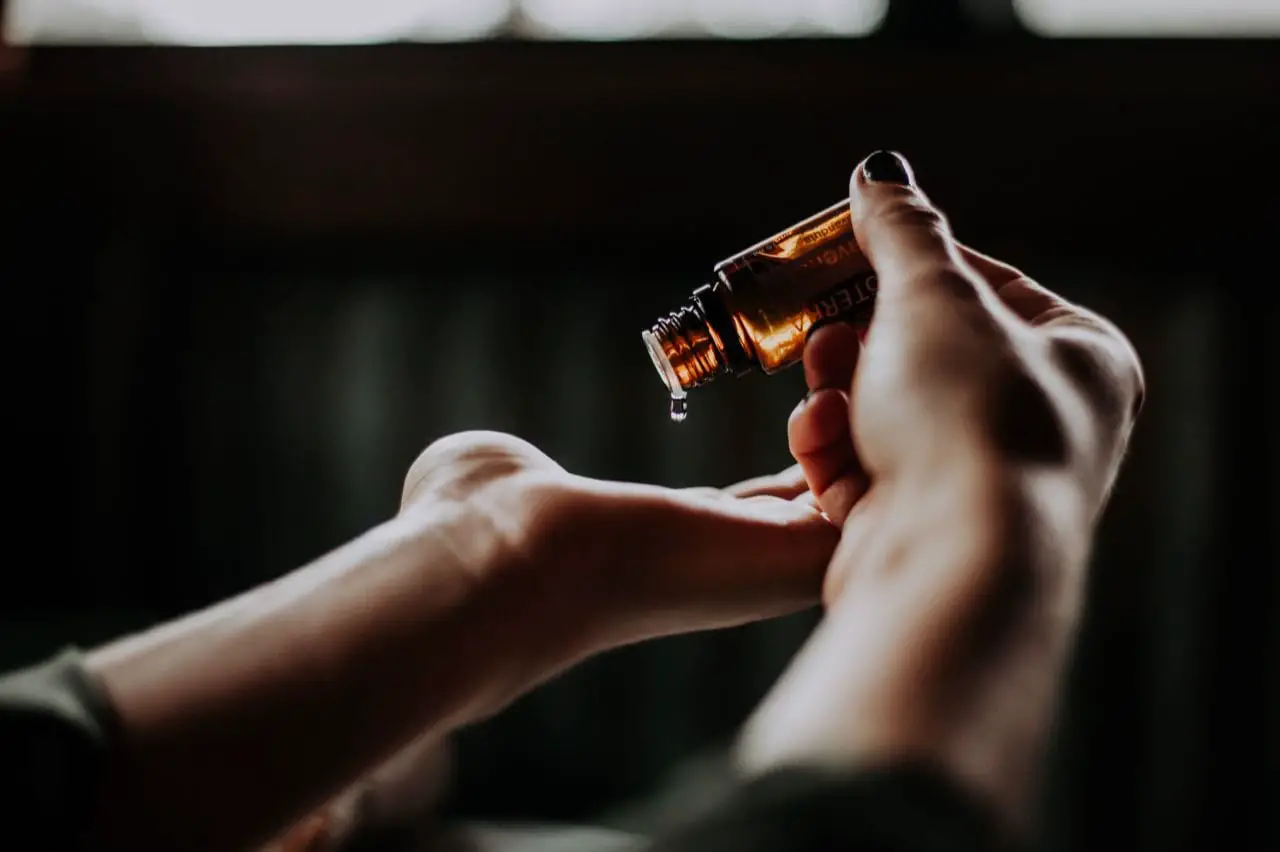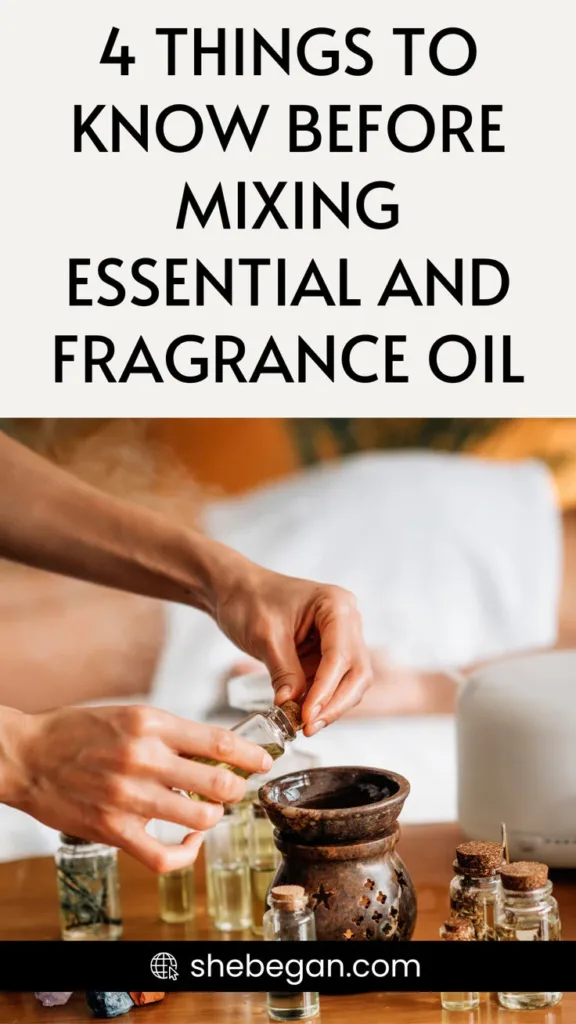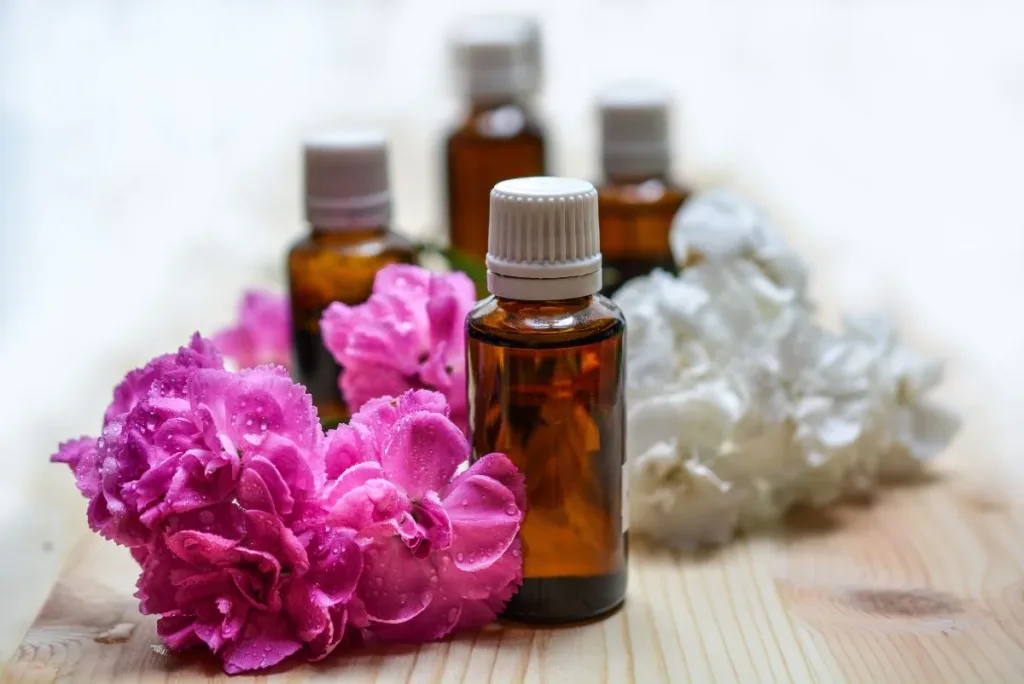Essential oils and fragrance oils are oils that are both known to have a lot of benefits. Even though they both have nice smells, there are differences between them. The two cannot be substituted for each other because their chemical makeup is different. However, to get the benefits both offer, one might ask the question: can essential oils and fragrance oils be mixed?
Yes, they can be mixed. Fragrance oils and essential oils can be mixed to make your own fragrances. However, mixing these oils is a very delicate process that should not be done by anyone who is not experienced in doing so.
The reason is that if you mix the wrong combination of essential oils, it can cause an adverse reaction or, even worse, death. Therefore I am here to ensure you are able to mix both oils effectively and get the maximum benefit, so read to the end.
Tips to Know Before Mixing Essential Oil and Fragrance Oil
Essential oils come from plants and have been shown to have therapeutic benefits. Fragrance oils do not have these benefits because they are made from chemicals rather than plants. They are designed to give off a scent that is similar to those provided by essential oils. While essential oils have many health benefits, fragrance oils are just used for cosmetic purposes.

You can also use different types of scents together to create unique blends. Essential oils can be mixed with fragrance oils in your products. However, there are other tips to consider before you start mixing, and they include:
1. The scents to be created
Before mixing essential and fragrance oils together, you have to consider the type of scent you wish to create. Decide on the mood or effect you wish to achieve, such as relaxing, energizing, or simply a pleasant aroma. This will determine the particular oil type of each you will choose. You have to choose the right base product.
2. Level of concentration needed
Essential oils are very concentrated and highly volatile. They should be used sparingly in products because they can cause irritation if used in large quantities or on sensitive skin types. Adding too much essential oil to a product can also change its color and consistency.
Fragrance oils are typically not as concentrated as essential oils, but they can still be irritating to some people if they contain a high concentration of synthetic fragrances. The “fragrance” part of fragrance oil refers to the synthetic scents that are added during processing, so these may not have any actual therapeutic value for your customers’ skin care needs.

3. Compatibility of the oils
Next, choose which oils you want to use in your blend. Some oils work better together than others, and some combinations may cause irritation if used too close together on the skin. For example, lavender and rosemary are both stimulating herbs that are great for morning blends.
But aren’t recommended as bedtime blends because they might keep people awake at night. The rule of thumb is that you should only mix fragrances if they have the same base note.
If you mix two fragrances that don’t have the same base note, you can create an off-putting scent that doesn’t smell quite right.
4. Consider the purpose of blending
Another tip is to consider the purpose of your blend. If you want to create a perfume for yourself or for someone else, you need to understand how the scent will change over time on their skin. This will require testing the final product on your skin before giving it as a gift or putting it on display in your shop.
How to Mix Essential Oils and Fragrance Oils

There are many ways to blend essential and fragrance oils to create unique scents:
1. Select your oils
Choose essential and fragrance oils that complement each other. It’s helpful to keep the blend simple with a few oils.
2. Measure and mix
When mixing fragrance and essential oils together, start with a small amount and add more if desired. Using droppers, add 1 drop of each oil you want to include and add more drops as necessary to achieve your desired scent strength to a glass bottle, starting with the base note oils, followed by middle notes, and finally, top notes.
Simply add a few drops of your chosen essential oil(s) or blend into your favorite fragrance oil.
3. Dilute the blend you created
Once you have your blend, dilute it with a carrier oil, especially if it will be used on the skin.
4. Test and adjust
Smell your blend and adjust the ratios as needed. Allow the blend to rest for a few days; some scents develop over time.
5. Label and store
Clearly label your blend with the ingredients and date. Store in a cool, dry place. Creating a fragrance blend is an art that is best learned by doing.
Which Oils Should not be Mixed?
As we have already discussed, not all oils are compatible to be mixed. So, I will now discuss the oils you should not mix
1. Eucalyptus essential oil
Eucalyptus is an astringent, meaning it will tighten the pores and remove dirt from them. However, if you combine this with a fragrance oil like lavender or chamomile, then it will sting.
2. Clary sage oil
This is an exceptional skin irritant and can cause dermatitis in some people. It’s best to avoid using it with other fragrance oils.
3. Bergamot
Bergamot is one of the most popular essential oils, and it’s used in many perfume formulations. It has a citrusy aroma that’s similar to orange blossoms but with more depth. While bergamot is safe to use on its own, it should never be mixed with other essential oils because it can cause skin irritation and sensitization when combined with other scents.
4. Clove oil
Clove oil is extracted from the clove plant, which belongs to the myrtle family and grows in tropical regions around the world. It has a pungent, sweet aroma similar to cinnamon but less spicy. It’s often used as an alternative to Cinnamon Bark Oil when sensitive skin is an issue or if you have allergies to cinnamon or cassia (cassia bark).
The problem with mixing clove oil with other fragrance oils is that it may irritate your skin or eyes if you don’t dilute it correctly first! You should always dilute clove essential oil before adding it to any beauty products like massage oils or lotions.
5. Citrus oils
Citrus oils like lemon and orange should not be combined with each other since they have similar properties and will likely cause a reaction if combined. They also should not be combined with any other citrus oil due to the risk of phototoxicity when the skin is exposed to sunlight after applying an oil.
6. Cedarwood and pine
These two essential oils have similar properties and should never be mixed together due to the risk of irritating skin and mucous membranes
There are many other oils that should not be mixed, like Citronella, Clove Bud, Clove Leaf, Clove Stem, Eucalyptus (Gum and Leaf), Fennel (Bitter & Sweet), Ginger Root, Lemongrass, Mace (Bud & Leaf), Nutmeg (Bark & Kernel), Oregano (Leaf), Thyme (Leaf & Twig)
When these essential oils are mixed with fragrance oil, they can cause the scent to become unstable or cause an adverse reaction in the finished product. If you mix them together, make sure to use a maximum of 10% fragrance oil before adding any other ingredients.

Can you Mix Different Essential Oils?
You can mix essential oils with other essential oils, but there are exceptions. The most common way to do this is by diluting them in a carrier oil or gel. The carrier oil helps to spread out and minimize the effects of the essential oil on your skin, and it also helps to lock in the properties of the essential oil.
When using essential oils topically on your skin, it is important to consider what type of carrier you will use for your blend. For example, if you are looking for an anti-inflammatory blend, using a carrier such as coconut oil may be suitable for this purpose because coconut oil has anti-inflammatory properties.
Conclusion
Essential and fragrance oils can absolutely be used together. This practice has been going on for years and is very common in the cosmetic industry. Go through the article to find out more about how to effectively mix essential oil and fragrance oil.






